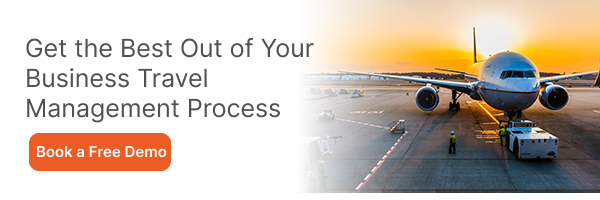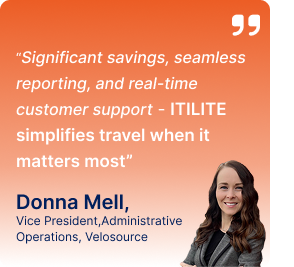
Travel management automation is taking over the business world. Studies show that the travel management software market is valued at 9.1 billion USD in 2023. This is because, as a company, if you miss out on automation, you miss out on enhanced efficiency and convenience.
According to a study by GBTA, companies using manual processes can spend up to 10-15% more on travel-related expenses compared to those with automated systems.
Whether you are moving from an unmanaged travel program to a managed program or trying out new-age software solutions like itilite, there is bound to be a changeover period with numerous business travel challenges.
In this guide, we will explore essential tips to ensure a smooth changeover to the new system.
Plan and Communicate the Transition
Start by creating a detailed transition plan with clearly defined roles and responsibilities.
Decide the contribution of your in-house travel team, the old corporate travel management partner, and the new partner.
Engage key stakeholders early in the process to identify objectives, timelines, and potential challenges. Clearly communicate the reasons for the transition, its benefits, and how it aligns with the company’s goals.
Regularly update employees on the progress and address any concerns promptly. Open and transparent communication will create buy-in and cooperation, ensuring a smoother transition.
Ensure Integration with Existing Systems
Seamless integration with existing business processes and systems is vital for the new travel software’s success. Verify that the software can work harmoniously with other tools in use, such as expense management systems or HR platforms.
Integrating data and functionalities between systems streamlines workflows and eliminates redundancy, enhancing overall efficiency and ensuring a more successful transition.
Assess and Migrate Data
Conduct a comprehensive assessment of the existing travel data. Identify essential information that needs to be migrated to the new system.
Carefully transfer data while ensuring its accuracy and integrity. Opt for a modular data transfer strategy, ensuring data accuracy and integrity with each step. This systematic, module-based approach significantly diminishes the risk of data loss, safeguarding critical information and ensuring seamless continuity throughout the transition process.
Conduct Training and Provide Resources
Make sure your new travel partner conducts comprehensive training sessions for employees who will use the new software. This will help in increased adoption rates. You can tailor the training to different user roles and provide ample resources, such as guides and tutorials, to facilitate learning.
Encourage hands-on practice to build confidence and familiarity with the system. Adequate training will empower employees to make the most of the software’s features, enhancing productivity and minimizing potential errors.
Get Dedicated Support
During the transition and after the new software’s implementation, ensure your new travel provider designates a dedicated support team augmented by AI-based assistance. This combined approach can provide employees with rapid responses to inquiries, effective troubleshooting, and timely solutions.
Having a responsive support system enriched with AI-driven capabilities will not only boost employee confidence in using the new software but also ensure that any hiccups are addressed promptly, keeping the transition on track.
The AI component can offer instant guidance, answer common queries, and assist with routine tasks, further enhancing the overall support experience for your employees.
Test the New Software Extensively
Thoroughly test the new business travel software before the official rollout. Conduct both user-based testing and technical evaluations to identify and rectify any glitches or compatibility issues.
User testing helps uncover potential usability problems and ensures that the software meets employees’ practical needs. Rigorous testing significantly reduces the likelihood of unexpected problems arising after implementation.
Suggested Read:
Develop a Phased Implementation Approach
Rather than a sudden switch, consider implementing the new software in phases. Gradual adoption allows employees to acclimate to the changes at a manageable pace.
Start with a pilot group or specific department to work out any initial challenges and gather feedback for fine-tuning. Once adjustments are made, expand the implementation to other teams until it covers the entire organization. A phased approach minimizes disruptions and facilitates smoother changeover.
Seek Employee Feedback
Encourage continuous feedback from employees throughout the transition and after the new software is in use. Create channels for employees to voice their opinions, suggestions, and concerns.
Feedback helps identify areas that may require further attention or improvement, allowing the organization to proactively address issues and optimize the software’s effectiveness according to user needs.
Monitor and Address Challenges Proactively
Monitoring the transition is a critical aspect of ensuring a successful changeover to the new business travel software. By proactively tracking performance metrics, user feedback, and system usage, you can swiftly detect any emerging challenges.
This approach will allow you to address issues promptly through the dedicated support team and continuous improvement efforts. Being proactive in monitoring and addressing challenges leads to a smoother and more effective transition process, ultimately maximizing the benefits of the new software.
Looking to switch to a more Efficient Travel Partner? Try Itilite
Transitioning to a new business travel software requires careful planning, open communication, and a methodical approach. By assessing data, providing training, and seeking employee feedback, the organization can ensure a seamless changeover.
If you are looking to switch to a new travel partner to provide you with more efficient travel management, itilite is the right fit for you. Itilite travel management platform caters to all your travel requirements, including policy adherence, round-the-clock business travel assistance, cost optimization, and enhancing the overall travel experience for your business travelers.
If you want to learn more about our advanced features, book a free demo today.












